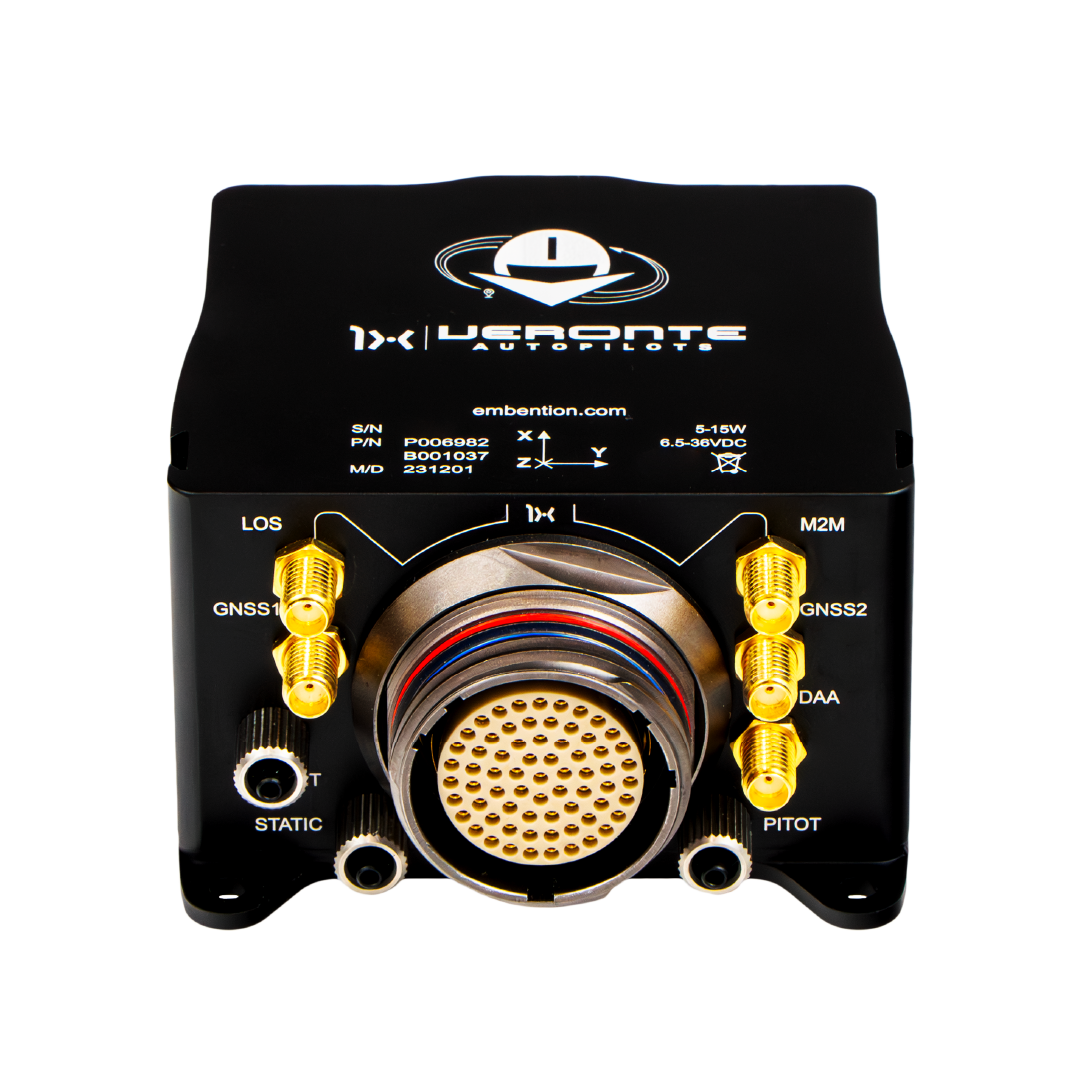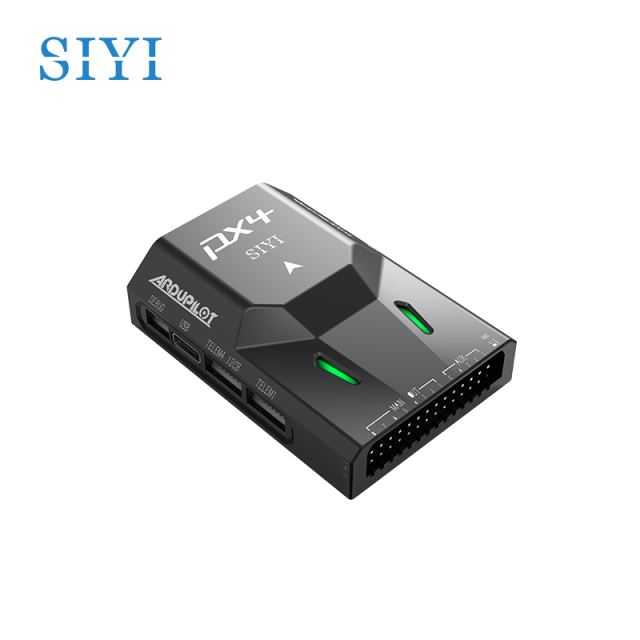SparkNavi Drone Flight Controller and GNSS/INS Made in Taiwan: Cutting-Edge Solutions for UAVs
SparkNavi Drone Flight Controller and GNSS/INS Made in Taiwan: Cutting-Edge Solutions for UAVs
Blog Article
Exploring the Function of Drone Flight Controllers in Enhancing Trip Stability and Navigation Efficiency
The advancement of drone innovation has actually dramatically enhanced the value of trip controllers, which work as the brain of these aerial cars. By incorporating real-time data from a variety of sensors, trip controllers enhance flight security and navigating efficiency, making certain that drones can operate smoothly even in intricate environments. This discussion will check out the essential elements that add to these improvements, in addition to the effects for the future of independent trip. What advancements lie ahead that could additionally change the abilities of drone flight controllers?

Comprehending Trip Controllers
Trip controllers are indispensable elements in the functioning of drones, serving as the brains that manage and maintain flight procedures. These advanced devices process information from different sensors, consisting of accelerometers, gyroscopes, and GPS, to guarantee that the drone preserves its intended trip course. The flight controller translates this data and implements commands based on pre-defined formulas, allowing the drone to react to ecological adjustments, such as wind or barriers.
The primary feature of a trip controller is to keep stability during trip. It achieves this by making real-time changes to the drone's motors and control surface areas, making sure balance and control. Furthermore, contemporary flight controllers integrate advanced attributes such as waypoint navigating, permitting automated flight paths and improved functional efficiency.
Understanding the architecture of trip controllers is vital for both experts and enthusiasts. They commonly contain a microcontroller, firmware, and various user interfaces for sensing unit input and interaction. As modern technology advancements, trip controllers have ended up being a lot more capable and portable, integrating expert system to improve decision-making processes and adapt to intricate flight circumstances. This advancement symbolizes a pivotal advancement in the drone industry, paving the means for much more innovative applications and safer procedures.
Trick Components of Trip Security
Accomplishing ideal flight stability in drones depends on numerous essential parts that work in performance to make sure controlled and smooth operations. Central to this stability is the trip controller itself, which processes data from numerous sensors to maintain the preferred flight attitude. This includes accelerometers and gyroscopes that determine motion and positioning, enabling real-time modifications to the drone's setting.
One more vital element is the digital rate controllers (ESCs), which regulate the power delivered to the electric motors. By carefully adjusting electric motor speeds in feedback to flight controller commands, ESCs aid maintain equilibrium and combat disturbances triggered by wind or unexpected movements.
Furthermore, the layout of the drone's frame plays a critical function in trip security. A well-structured frame lessens vibrations and enhances the total aerodynamic profile, contributing to smoother flight qualities. The integration of innovative formulas within the flight controller help in predictive changes, making certain a adaptable and responsive flight experience.
Together, these components develop a natural system that boosts a drone's security, enabling precise maneuvering and enhanced performance in different trip problems.
Navigating Effectiveness Methods
Performance in navigation is necessary for maximizing drone procedures, specifically in complicated settings. Effective navigating strategies improve the ability of drones to traverse difficult terrains and avoid barriers, thereby boosting functional efficiency and safety.
One prominent method is the application of sophisticated GPS and inertial measurement systems (IMUs) that offer accurate area tracking and alignment data. These technologies allow drones to compute optimal trip courses in real-time, considering various variables such as wind problems and potential challenges.
One more method entails the usage of algorithms for path planning and optimization. Formulas such as A * and Dijkstra's formula can be deployed to determine one of the most effective route while reducing power consumption and flight time. Moreover, incorporating artificial intelligence designs can make it possible for drones to adaptively gain from their settings, improving navigation capabilities via experience.

Influence On Autonomous Drones
The combination of innovative navigating strategies has actually profoundly changed the abilities of self-governing drones, enabling them to operate with greater freedom and accuracy. SparkNavi drone flight controller and GNSS/INS made in taiwan. These improvements are mostly associated to sophisticated trip controllers that use real-time information processing and sensing unit fusion, enabling drones to browse complex settings flawlessly
The influence on self-governing drones extends past mere navigating; it includes improved challenge evasion, boosted security during vibrant conditions, and increased mission integrity. By leveraging formulas that include artificial intelligence and synthetic knowledge, drones can adapt to altering scenarios, making educated choices that maximize their trip courses while lessening threats.
Moreover, the execution of durable trip controllers has actually helped with the implementation of intricate tasks, such as airborne evaluations, delivery services, and farming tracking, with very little human treatment. This capability not just streamlines operations but also lowers human mistake, therefore boosting overall security.
Therefore, the functional range of independent drones has actually broadened dramatically, making them important tools in numerous sectors. Their capability to carry out efficiently in diverse situations highlights the essential role that advanced try here trip controllers play in forming the future of unmanned airborne systems.
Future Fads in Trip Control
Often, developments in trip control modern technology are positioned to redefine the landscape of drone operations in the coming years. Emerging fads indicate a considerable shift in the direction of enhanced expert system (AI) integration, allowing trip controllers to refine real-time information more effectively. This evolution will promote improved decision-making abilities, permitting drones to adapt to dynamic ecological problems autonomously.
Furthermore, the execution of machine knowing algorithms is expected to boost anticipating upkeep, thus reducing downtime and expanding the lifecycle of drone elements. This positive method to maintenance will be important as drone applications expand across numerous industries, from agriculture to logistics.

.png)
Finally, innovations in safe and secure interaction methods will certainly deal with safety and security and governing issues, guaranteeing that drones can operate flawlessly in congested airspaces (SparkNavi drone flight controller and GNSS/INS made in taiwan). Jointly, these fads direct towards a future where flight control systems are not just smarter and extra effective but additionally capable of running securely in a significantly incorporated airspace
Final Thought
To conclude, drone trip controllers are indispensable to boosting flight stability and navigating efficiency with the innovative processing of sensor information. By preserving optimal trip perspectives and employing innovative algorithms for course optimization and barrier avoidance, these controllers significantly add to the freedom and operational safety of drones. As technology proceeds to develop, further innovations in trip control systems are anticipated, assuring better efficiency and broadened abilities in the world of unmanned aerial lorries.
By incorporating real-time data from an array of sensors, flight controllers boost trip stability and navigation performance, ensuring that drones can operate efficiently even in complex settings.Flight controllers are indispensable elements in the functioning of drones, offering as the brains that manage and stabilize flight procedures. In addition, modern-day trip controllers integrate advanced functions such my explanation as waypoint navigating, enabling for automated trip courses and boosted functional efficiency.
Central to this stability is the trip controller itself, which processes information from numerous sensors to maintain the wanted trip attitude.In final thought, drone flight controllers are important to enhancing trip stability and navigating efficiency through the advanced handling of sensor data.
Report this page